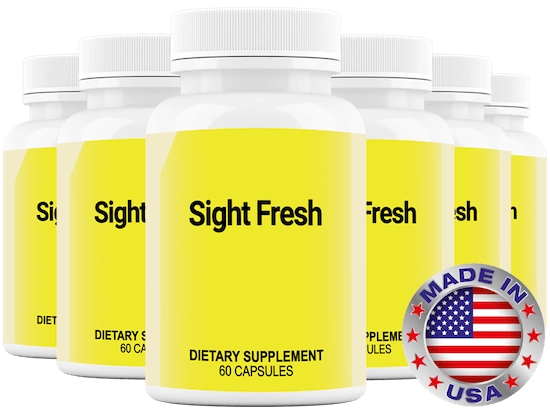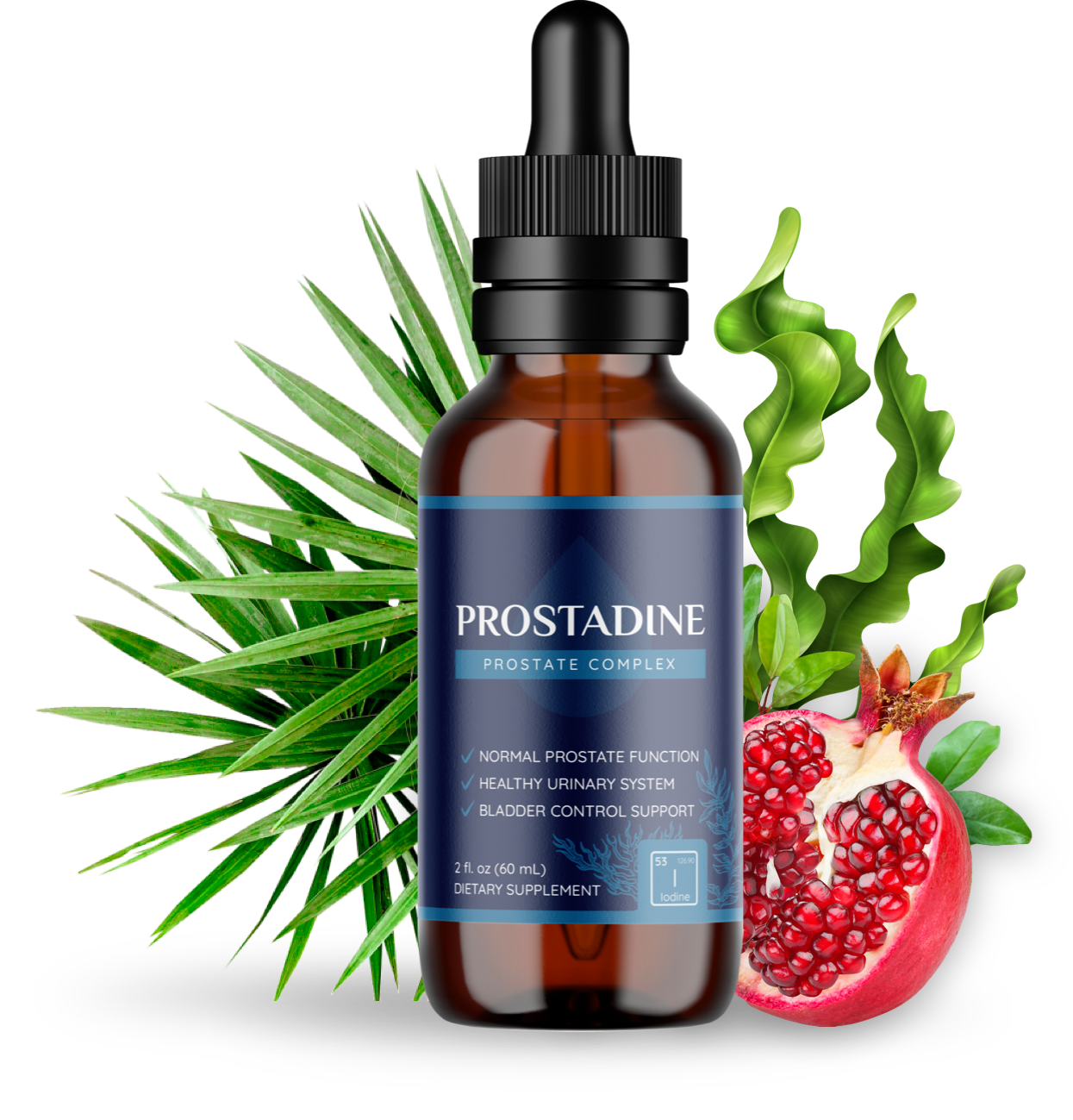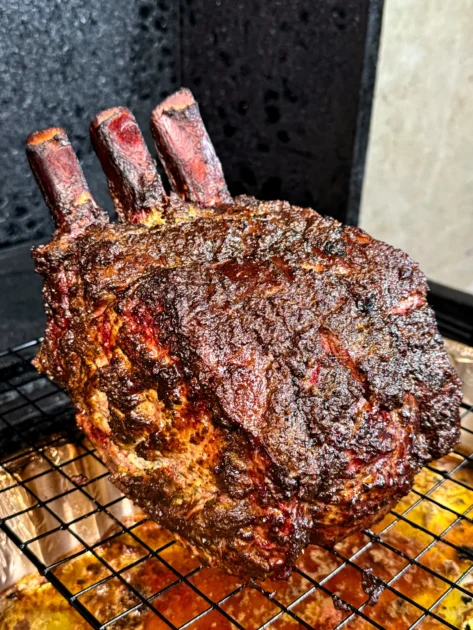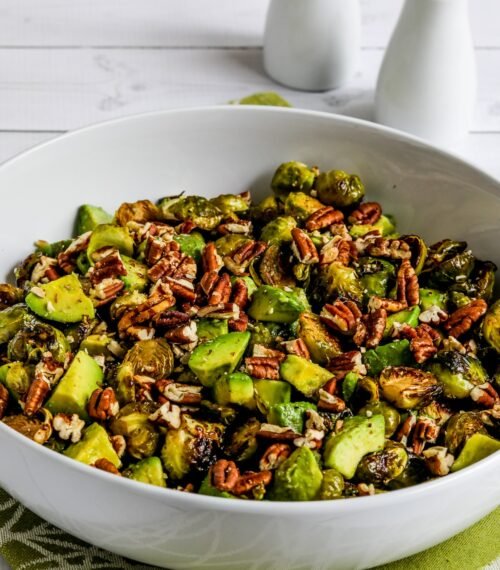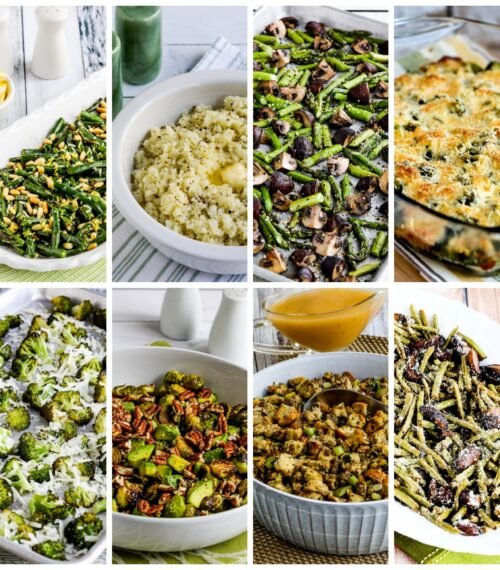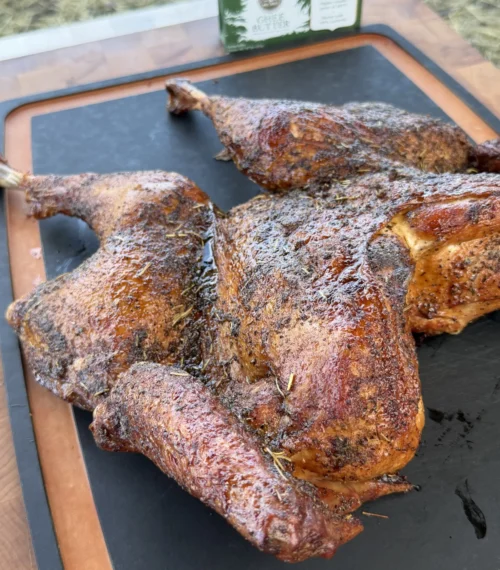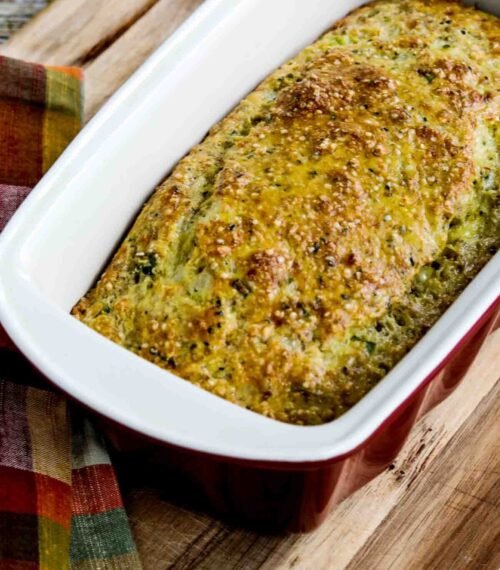The Ultimate Prime Rib Recipe Collection: 6 Amazing Methods for Perfect Results
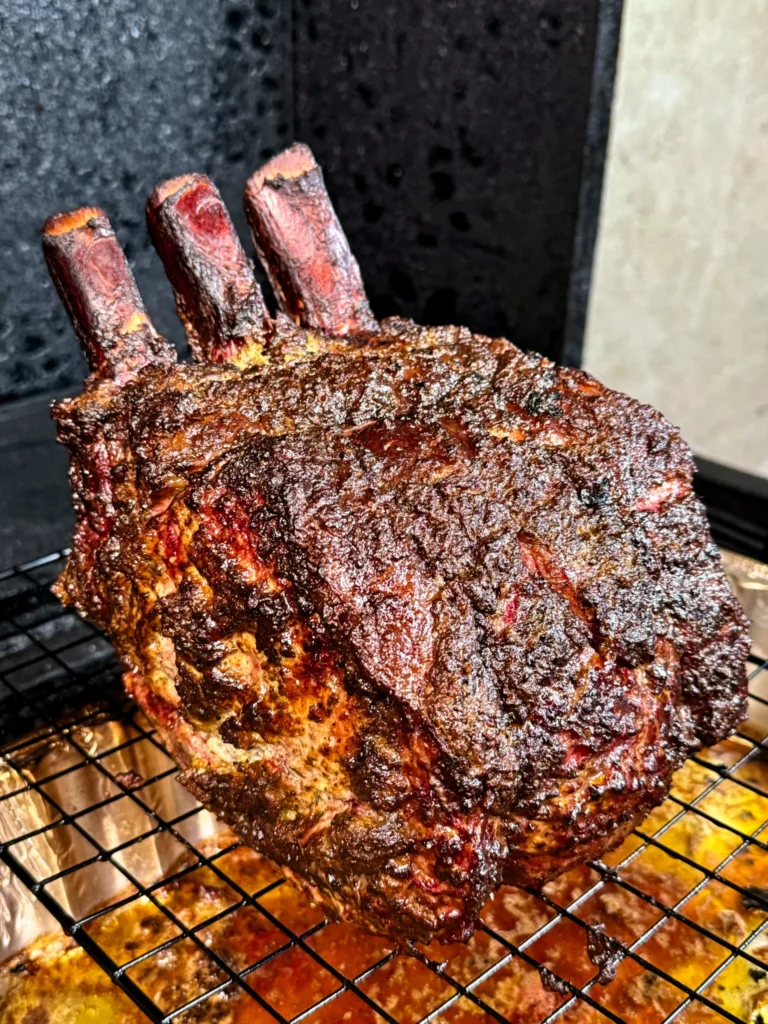
Prime rib is the crown jewel of any special occasion meal. Whether you’re planning Christmas dinner, hosting a New Year’s celebration, or simply want to create an unforgettable dining experience, a perfectly cooked prime rib delivers every single time.
But here’s the thing—prime rib isn’t just one recipe. It’s a canvas for incredible flavor combinations and cooking techniques. This comprehensive guide features six exceptional prime rib recipes, each showcasing a different approach to this magnificent cut of beef. From classic pellet-smoked perfection to bold garlic herb compounds, robust hickory smoke to elegant horseradish crusts, and even adventurous bone marrow butter—you’ll discover multiple ways to master this iconic roast.
Every recipe in this collection delivers restaurant-quality results at home. The rich marbling, tender texture, and deep beefy flavor of prime rib responds beautifully to low and slow smoking, creating a roast that’s juicy from edge to edge with a perfectly seasoned crust. No matter which method you choose, you’ll serve a showstopping centerpiece that has your guests asking for seconds—and the recipe.
Let’s dive into the world of smoked prime rib and find your perfect match.
Why Prime Rib Is the Ultimate Special Occasion Roast

Before we explore the recipes, let’s talk about what makes prime rib so special and why it’s worth the investment for important meals.
The Cut Itself Prime rib comes from the primal rib section of the beef—specifically ribs 6 through 12. This area doesn’t get much exercise during the animal’s life, which means the meat stays incredibly tender. The generous marbling throughout the muscle creates natural richness and flavor. When you cook prime rib properly, that fat renders slowly, basting the meat from within and creating an almost buttery texture.
The name “prime rib” can be confusing—it doesn’t necessarily mean the beef is USDA Prime grade (though Prime grade is ideal). The “prime” refers to the fact that this cut comes from the primal rib section. That said, you’ll get the best results with either USDA Prime or USDA Choice grade beef. Prime has more marbling and costs more, but Choice grade still delivers excellent results at a better price point.
Why Smoking Works Perfectly

Prime rib is naturally suited for low and slow cooking methods, which makes smoking ideal. The extended cooking time at moderate temperatures (225-275°F) allows the fat to render gradually without drying out the meat. The smoke penetrates the exterior while the interior stays incredibly juicy.
Traditional oven roasting works, but smoking adds an extra dimension of flavor that elevates prime rib from excellent to extraordinary. The wood smoke creates a savory crust on the outside while the low temperature ensures edge-to-edge perfection on the inside. You avoid the gray band of overcooked meat you sometimes see with high-heat roasting.
The Reverse Sear Advantage
Most of these recipes use a reverse sear technique—low and slow smoking until the internal temperature reaches about 110-125°F (depending on desired doneness), followed by a quick high-heat sear to develop a crispy, flavorful crust. This two-step process gives you the best of both worlds: perfectly cooked interior and deeply caramelized exterior.
The reverse sear also allows you to control doneness much more precisely than traditional methods. Since you’re bringing the meat up to temperature slowly, there’s less risk of overshooting and ending up with medium or medium-well when you wanted medium-rare.
Bone-In vs. Boneless
All six recipes in this collection use bone-in prime rib, and for good reason. The bones act as natural heat insulators, protecting the meat closest to them from overcooking. They also add flavor as the marrow and connective tissue render during cooking. Many people consider the meat right next to the bone the most flavorful part of the roast.
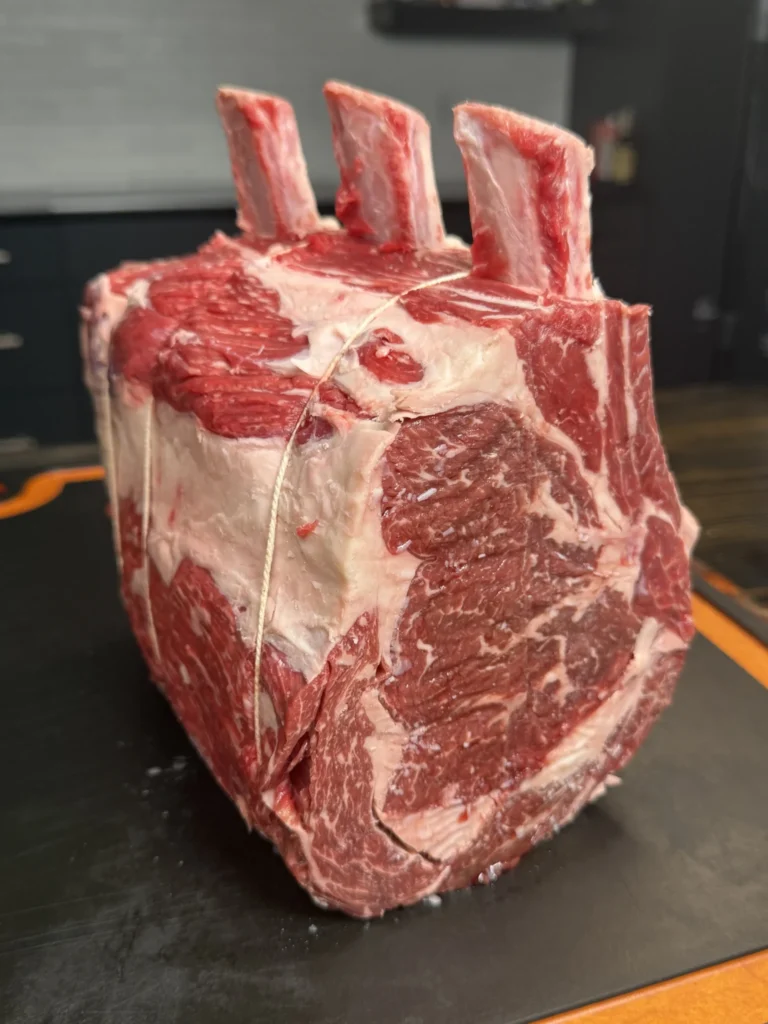
That said, bone-in roasts are more expensive and can be harder to carve. If you prefer boneless, any of these recipes will work—just reduce the cooking time slightly since boneless roasts cook a bit faster.
Sizing Your Roast Plan on one bone (one rib) per two people, or about 1 to 1.5 pounds of bone-in prime rib per person. A 3-bone roast feeds 6 people, a 4-bone feeds 8, and so on. If you’re serving big eaters or want plenty of leftovers, go with the higher end of that estimate.
Understanding Temperature and Doneness
Getting prime rib to your preferred doneness is all about internal temperature, not timing. Here’s what you need to know:
Temperature Guide Remember that prime rib will continue cooking after you remove it from the smoker—this is called carryover cooking. The internal temperature typically rises 5-10 degrees during the resting period. That’s why you pull the roast a bit before your target temperature.
Rare:
Medium-Rare (Recommended):
Medium:
Medium-Well:
Well-Done:
Most people prefer prime rib cooked to medium-rare (130-135°F final temperature). This doneness showcases the tender texture and rich flavor while keeping everything incredibly juicy. The marbling stays soft and buttery rather than firm.
Where to Check Temperature Insert your meat thermometer into the thickest part of the roast, making sure you’re in the center of the meat and not touching bone. Bone conducts heat differently than meat and will give you a false reading. Check in multiple spots if you’re unsure—the temperature can vary throughout a large roast.
Recipe #1: Smoked Prime Rib (Pellet Grill with Au Jus)

View Full Recipe: Smoked Prime Rib
This is the newest recipe in the collection and it’s designed specifically for pellet grills. If you own a pellet smoker and want foolproof, consistent results, this is your recipe. The focus here is on technique and temperature control, with a rich au jus that develops alongside the roast.
What Makes This Recipe Special
The genius of this recipe is the au jus preparation method. You create a foil pan of beef broth, Worcestershire sauce, garlic, lemon, herbs, and butter, then place the prime rib on a wire rack above it. As the roast smokes, the drippings fall into the au jus below, enriching it with all those rendered fats and concentrated beef flavors. You baste the prime rib with this developing au jus every 25-30 minutes, creating layers of flavor and keeping the exterior moist.
By the time the prime rib is done, you have this incredibly rich, beefy au jus that’s been infused with the roast’s drippings and the smoke flavor. You strain it and serve it alongside the sliced prime rib for dipping. It’s restaurant-quality presentation and flavor.
Who This Recipe Is For
Perfect for pellet grill owners who want a straightforward, reliable method. Pellet grills maintain consistent temperature automatically, which takes the guesswork out of smoking. If you’re newer to smoking meat or just want a recipe where you can “set it and forget it” (mostly), this is ideal.

This recipe is also great for holiday meals where you’re managing multiple dishes. The pellet grill handles the temperature control while you focus on sides and desserts. The au jus serves as both a basting liquid during cooking and a serving sauce after—two jobs, one mixture.
Key Highlights
Pro Tips for Success
Let the prime rib sit at room temperature for a full hour before smoking. A cold roast straight from the fridge will take longer to cook and the exterior can overcook before the center reaches temperature. Room temperature meat cooks more evenly.
French the bones if you want an impressive presentation. This means cleaning the meat off the ends of the rib bones so they’re exposed and clean. It doesn’t affect flavor, but it looks stunning on a platter. Ask your butcher to do this when you buy the roast.
Don’t skip straining the au jus through a fine mesh sieve before serving. This removes the herb stems, garlic pieces, and any coagulated fat or protein, leaving you with a smooth, elegant sauce.
Recipe #2: Smoked Prime Rib Roast with Garlic Herb Butter Paste
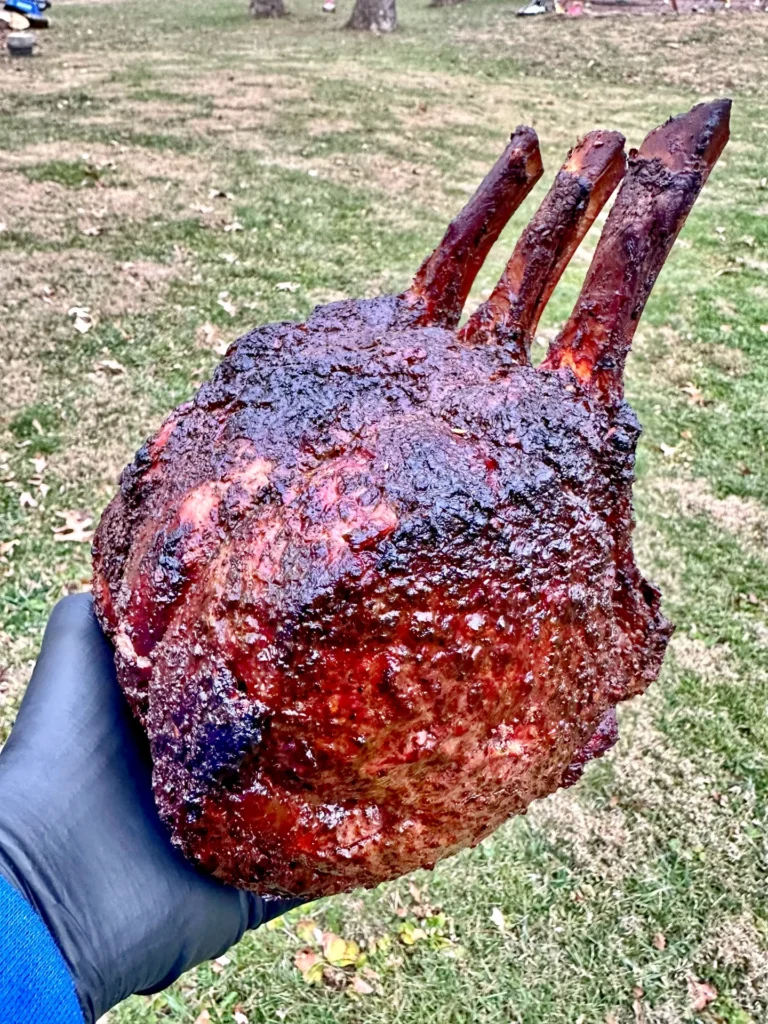
View Full Recipe: Smoked Prime Rib Roast with Garlic Herb Butter Paste
This recipe is all about that incredible garlic herb butter paste that gets slathered all over the prime rib before smoking. It’s like icing a cake, except the cake is a massive hunk of beef and the icing is compound butter loaded with fresh herbs and garlic. The result is a roast with an aromatic, flavorful crust that’s absolutely addictive.
What Makes This Recipe Special
The compound butter paste is made by whipping softened butter with fresh rosemary, thyme, basil, garlic paste, lemon juice, and red pepper flakes in a food processor. You spread this thick, fragrant paste all over every surface of the prime rib—it should be completely coated. As the roast smokes with apple wood, that butter melts and bastes the meat while the herbs and garlic infuse into the crust.
The apple wood smoke is key here. It’s mild and slightly sweet, which complements the herbs without overpowering them. Stronger woods like hickory or mesquite would compete with the delicate herb flavors, but apple lets everything work together harmoniously.
Who This Recipe Is For
If you love herb-forward flavors and want your prime rib to be aromatic and elegant, this is your recipe. It’s perfect for formal dinner parties or holiday meals where presentation matters. The golden, herb-crusted exterior looks stunning and smells incredible.
This recipe is also great if you’re the type who enjoys working with fresh herbs and creating compound butters. There’s something satisfying about making that paste from scratch and seeing how it transforms the roast. It feels artisanal and special.
Key Highlights
Pro Tips for Success
Make the compound butter paste several hours ahead or even the day before. Store it in the fridge, then let it come to room temperature before using. This makes it easier to spread and allows the flavors to meld together.
Pat the prime rib completely dry before applying the first layer of olive oil and seasonings. Any moisture on the surface will prevent the seasonings and butter paste from adhering properly. Dry meat = better crust.
Use a food processor to make the butter paste. Hand-mixing won’t achieve the same whipped, creamy consistency. The food processor incorporates air and breaks down the herbs finely so they distribute evenly throughout the butter.
Recipe #3: Hickory Smoked Prime Rib

View Full Recipe: Hickory Smoked Prime Rib
If you want bold, traditional BBQ smoke flavor, hickory is the wood to use. This recipe delivers robust smoke character that pairs perfectly with beef. The herb paste seasoning and butter basting create a deeply flavorful crust while the hickory smoke penetrates the meat.
What Makes This Recipe Special
Hickory wood has a strong, bacon-like smoke flavor that stands up to the rich beefiness of prime rib without being overpowering. Unlike milder woods, hickory makes a statement—your prime rib will taste distinctly smoked in the best way possible.
The technique here involves tying the prime rib with butcher’s twine between each bone to help it hold its shape during the long smoke. You season it with an herb paste made in a food processor (rosemary, thyme, sage, beef rub, garlic, black pepper, salt, and olive oil), then baste it with melted butter every 30-40 minutes during smoking. The water pan underneath catches drippings and prevents flare-ups while adding humidity to keep the meat moist.

Who This Recipe Is For
This recipe is perfect for traditional BBQ enthusiasts who want that authentic smoke flavor. If you love the smell and taste of hickory smoke—think classic BBQ joints and competition BBQ—you’ll love this approach to prime rib.
It’s also ideal for more casual gatherings where you want impressive food but don’t need ultra-refined presentation. The hickory smoke gives it a rustic, comforting quality that works beautifully for backyard celebrations and family get-togethers.
Key Highlights
Pro Tips for Success
Tie the roast with butcher’s twine between each bone before seasoning. This keeps everything compact during the long cooking time and makes the roast easier to handle when you’re basting and checking temperature.
Start basting after the first 30 minutes of smoking, not right away. This gives the herb paste time to set and develop a base crust. If you baste too early, you’ll wash away the seasonings before they’ve had a chance to adhere.
Let the prime rib rest for the full 25 minutes after removing from the smoker. Tent it loosely with foil but don’t wrap it tightly—you want air circulation so the crust stays crispy rather than steaming and getting soggy.
Recipe #4: Smoked Prime Rib With Creamy Horseradish Sauce
View Full Recipe: Smoked Prime Rib With Creamy Horseradish Sauce
The classic pairing of prime rib and horseradish sauce gets the smoking treatment in this recipe. The creamy horseradish sauce—made with mayo, sour cream, prepared horseradish, Dijon mustard, lemon, and fresh herbs—is the perfect tangy, spicy complement to the rich, smoky beef.
What Makes This Recipe Special
While the other recipes focus on compound butters and herb pastes, this one keeps the prime rib seasoning straightforward (Worcestershire sauce as a binder, then black pepper, salt, and garlic powder) and lets the horseradish sauce be the star. The sauce is made 4 hours ahead so the flavors have time to marry together and develop complexity.
The smoking technique uses apple wood for mild smoke and Worcestershire sauce for basting every 45 minutes. This creates a savory, umami-rich crust without competing with the bright, sharp flavors of the horseradish sauce. When you serve the sliced prime rib with the creamy horseradish on the side, every bite has perfect balance—rich beef, subtle smoke, and that characteristic horseradish kick that cuts through the fat.
Who This Recipe Is For
This is ideal if you’re a traditionalist who loves the classic prime rib and horseradish combination. The horseradish sauce is what many people expect with prime rib, especially for Christmas and holiday meals. This recipe perfects that pairing while adding the bonus of smoke flavor.
It’s also great if you want a recipe where the sauce is a key component rather than an afterthought. The horseradish sauce here is elevated with fresh herbs (basil, rosemary, chives), lemon zest, and Dijon mustard—it’s not just store-bought horseradish mixed with sour cream.
Key Highlights
Pro Tips for Success
Make the horseradish sauce at least 4 hours ahead as the recipe states. The flavors really do need time to meld. The sharpness of the horseradish mellows slightly, the herbs infuse into the cream base, and everything comes together into a cohesive sauce.
Use Worcestershire sauce as your binder before seasoning. It adds a subtle fermented, savory note that enhances the beef flavor without being obvious. It also helps the dry seasonings stick better than oil alone.
When searing after smoking, make sure your grill is screaming hot—500°F+. You want to develop a dark crust in 45-60 seconds per side without raising the internal temperature too much. If the grill isn’t hot enough, you’ll overcook the exterior while trying to get color.
Recipe #5: Garlic and Herb Rib Roast (Stuffed Method)
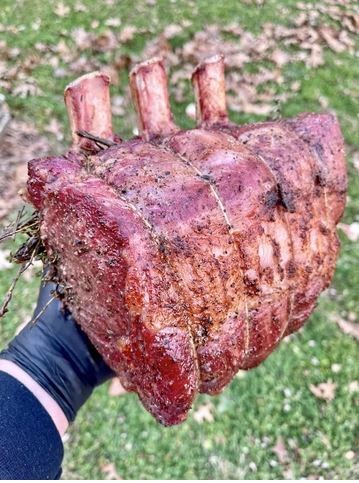
View Full Recipe: Garlic and Herb Rib Roast
This recipe takes a unique approach—instead of coating the outside with herbs, you stuff them inside the roast. You cut along the back where the bones attach (without cutting all the way through), creating a pocket that you pack with fresh thyme, rosemary, and smashed garlic cloves. Then you tie it back together and smoke it. The herbs and garlic infuse the meat from the inside out.
What Makes This Recipe Special
The stuffing technique is what sets this apart. By creating that pocket between the meat and bones, you’re essentially creating an herb chamber where the aromatics have direct contact with the meat during the entire cooking process. As the roast smokes, those herbs and garlic infuse their flavors deep into the prime rib.
The exterior gets seasoned simply with salt, pepper, and garlic powder, then the roast smokes with whiskey barrel wood chunks. Whiskey barrel wood adds a subtle vanilla sweetness and slight char that’s distinct from other woods. During smoking, you baste with an herb butter mixture (butter, rosemary, thyme, garlic, and hot sauce) every 20 minutes, building up a flavorful crust while keeping everything moist.
Who This Recipe Is For
This is perfect for anyone who wants to try something different from the standard herb-crusted prime rib. The stuffing technique feels special and chef-inspired without being complicated. When you slice into the roast, you can see the herbs packed inside—it’s a conversation starter.
If you have access to whiskey barrel wood (it’s increasingly available at specialty BBQ stores), this recipe showcases that unique flavor beautifully. If not, you can substitute oak or hickory and still get excellent results.
Key Highlights
Pro Tips for Success
When making the cut along the back of the roast, use a sharp chef’s knife and cut down about 4 inches deep. Don’t cut all the way through—you’re creating a pocket, not separating the meat from the bones. Work carefully and take your time.
Pack the herb pocket generously. Don’t be shy—you want a thick layer of thyme, rosemary, and garlic in there. As the roast cooks, the herbs will compact slightly, so what seems like a lot going in will be just right when finished.
Tie the roast with butcher’s twine in 4-5 places along the length. This keeps the stuffed herbs from falling out and helps the roast hold its shape during the long smoke. Make the ties snug but not so tight that they cut into the meat.
Recipe #6: Garlic N Herb Prime Rib Roast (Bone Marrow Butter)
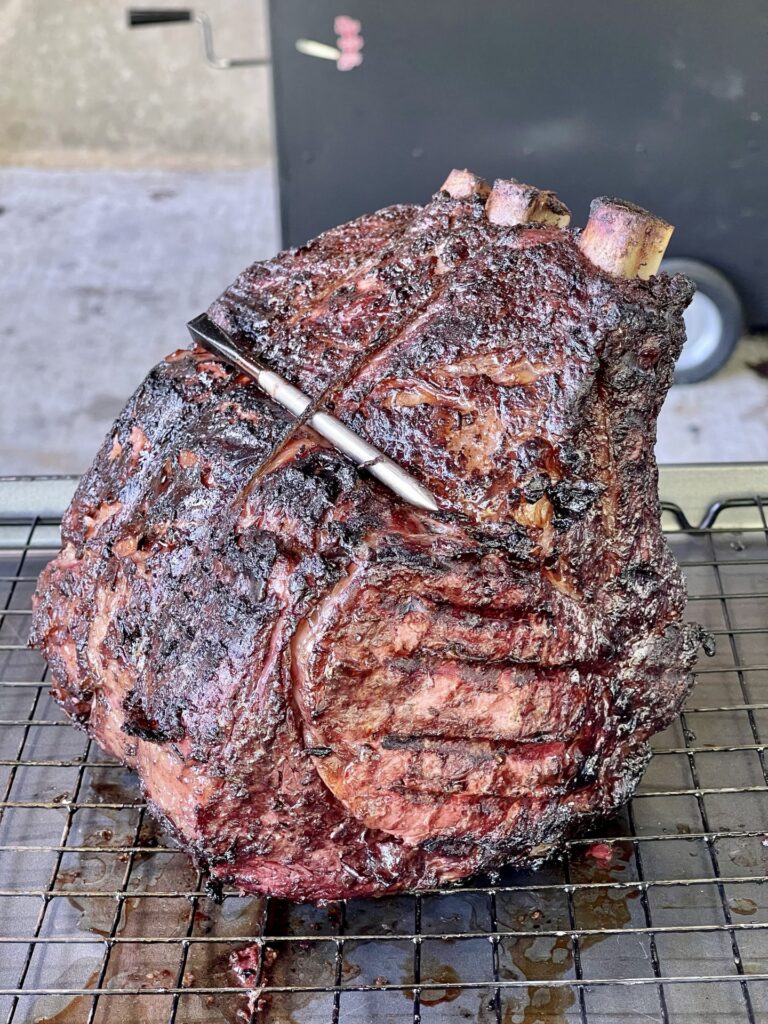
View Full Recipe: Garlic N Herb Prime Rib Roast
This is the most adventurous recipe in the collection. Instead of regular butter, you make a compound butter with bone marrow—that incredibly rich, fatty tissue from inside beef bones. The bone marrow butter gets whipped with herbs and then slathered all over the prime rib before smoking. It’s decadent, luxurious, and creates an intensely beefy flavor that’s hard to describe until you’ve tasted it.
What Makes This Recipe Special
Bone marrow is essentially beef fat in its purest, most flavorful form. When you soak it in salted water for 24 hours (changing the water 3-4 times), you’re removing any blood and impurities, leaving pure, creamy marrow. You then incorporate this into softened butter along with herbs, creating a compound butter that’s next-level rich.
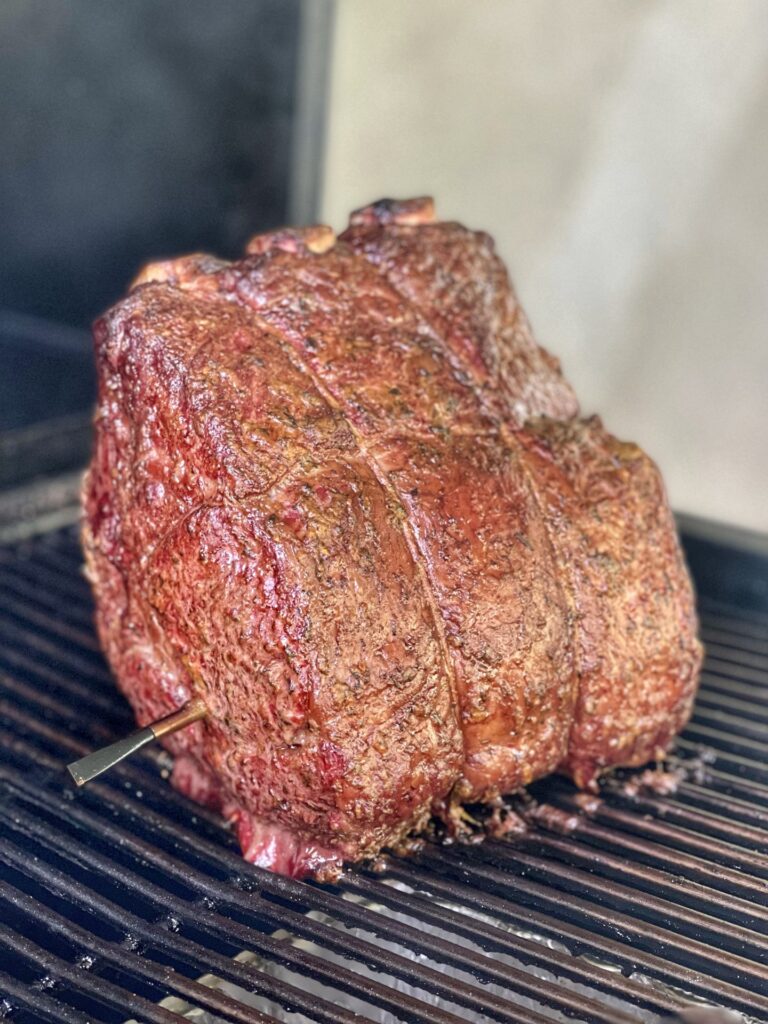
When this bone marrow herb butter melts over the smoking prime rib, it bastes the meat with concentrated beef flavor. It’s like the prime rib is basting itself with its own essence. The result is a roast with incredible depth of flavor—more beefy than beef alone, if that makes sense. The hickory smoke complements this richness beautifully.
Who This Recipe Is For
This recipe is for adventurous cooks who want to push boundaries and try something truly special. If you’re the type who seeks out unique ingredients and techniques, working with bone marrow will excite you. It’s also perfect for impressing serious food enthusiasts who appreciate bold, chef-driven flavors.
That said, bone marrow can be harder to source. You’ll need to ask your butcher or visit a specialty meat market. Plan ahead because it requires 24 hours of soaking before use. This isn’t a last-minute recipe—it’s a project, and that’s part of the appeal.
Key Highlights
Pro Tips for Success
Don’t skip the 24-hour soaking process for the bone marrow. This removes the blood and impurities that can create off-flavors. Change the salted water 3-4 times during soaking, and always use cold water. The final result should be creamy, white marrow with no red spots.
Use a food processor to combine the bone marrow and butter—hand-mixing won’t achieve the same smooth, whipped consistency. The marrow needs to be fully incorporated into the butter so it spreads evenly.
Save some of the compound butter for serving. After the prime rib rests, put a pat of that bone marrow butter on each slice. As it melts, it creates an incredible sauce right on the plate.
Choosing the Right Recipe for Your Occasion
With six incredible options, how do you decide? Here’s a guide to help:
For Foolproof Results on a Pellet Grill: Choose Recipe #1 (Smoked Prime Rib with Au Jus). The pellet grill maintains temperature automatically, and the au jus technique is straightforward and delicious.
For Elegant Holiday Dinners: Go with Recipe #2 (Garlic Herb Butter Paste). The compound butter coating and apple wood smoke create a refined, aromatic roast perfect for formal occasions.
For Bold, Traditional BBQ Flavor: Pick Recipe #3 (Hickory Smoked Prime Rib). If you want robust smoke character and classic BBQ vibes, hickory delivers.
For Classic Prime Rib Experience: Select Recipe #4 (Prime Rib with Horseradish Sauce). The traditional pairing with an elevated horseradish sauce is what many people expect and love for the holidays.
For Impressive Presentation: Try Recipe #5 (Stuffed Garlic and Herb). The stuffing technique and whiskey barrel smoke create a dramatic, chef-inspired roast that looks stunning when sliced.
For Adventurous Cooks: Attempt Recipe #6 (Bone Marrow Butter). If you want to push your skills and create something truly unique, the bone marrow compound butter delivers next-level flavor.
Essential Equipment for Smoking Prime Rib

Regardless of which recipe you choose, you’ll need:
Smoker Any type works—pellet grill, offset smoker, charcoal smoker, or kamado-style grill. Pellet grills are easiest for temperature control. Offset and charcoal smokers require more attention but produce incredible flavor. Recipe #1 is specifically designed for pellet grills, but all recipes work on any smoker type.
Reliable Meat Thermometer Non-negotiable. You need an instant-read thermometer at minimum, but a wireless leave-in probe is ideal for monitoring temperature without opening the smoker. Prime rib is too expensive to guess—always cook to temperature, not time.
Heavy-Duty Butcher’s Twine Several recipes call for tying the roast. Butcher’s twine (also called kitchen twine) is heat-resistant and food-safe. Don’t use regular string or synthetic cord.
Sharp Carving Knife A long, sharp carving knife makes slicing much easier. Dull knives tear the meat instead of slicing cleanly, and you lose those beautiful juices.
Food Processor (for butter paste recipes) Recipes #2, #3, #5, and #6 require whipping compound butters or herb pastes. A food processor does this quickly and evenly. Hand-mixing won’t achieve the same consistency.
Wire Rack and Drip Pan Many recipes use a wire rack over a drip pan. The rack elevates the roast so smoke circulates underneath, and the drip pan catches rendered fat (preventing flare-ups) while also serving as the base for au jus in Recipe #1.
Wood Selection Guide
The wood you choose significantly impacts flavor:
Apple Wood Mild, slightly sweet smoke. Best for Recipes #2 and #4 because it complements herbs and doesn’t overpower delicate flavors. Great beginner wood because it’s hard to over-smoke with apple.
Hickory Wood Medium-strong, bacon-like smoke. Perfect for Recipe #3 and #6 when you want bold, traditional BBQ flavor that stands up to rich beef.
Oak Wood Medium smoke, versatile and reliable. Works well for any recipe when you want classic smoke character without being too strong or too mild.
Pecan Wood Nutty, robust smoke similar to hickory but slightly milder. Good alternative to hickory if you want full flavor without quite as much intensity.
Whiskey Barrel Wood Unique smoke with subtle vanilla and char notes. Recipe #5 specifically calls for this, but oak or hickory work as substitutes if you can’t find it.
Mesquite Wood Strong, intense smoke. Generally too powerful for prime rib—can make it taste bitter. Only use if you really love aggressive smoke flavor.
Common Prime Rib Smoking Mistakes to Avoid
Even with detailed recipes, there are pitfalls to watch out for:
Not Letting the Roast Come to Room Temperature
A cold roast from the fridge takes longer to cook and cooks unevenly. Always let it sit at room temperature for 1 hour before smoking (some recipes call for 90 minutes). The exterior and interior will be closer to the same temperature, leading to more even cooking.
Skipping the Resting Period
This is the biggest mistake people make. After all that time smoking, you’re impatient to slice and serve. But if you cut into prime rib immediately, all the juices run out onto the cutting board instead of staying in the meat. Rest for at least 20-30 minutes, tented loosely with foil.
Cooking to Time Instead of Temperature
Variables like weather, exact roast size, bone vs. boneless, and smoker efficiency all affect cooking time. Always cook to internal temperature (use the guide earlier in this article) and treat timing as an estimate only.
Using Too Much Smoke
More smoke doesn’t equal better flavor. Too much creates bitter, acrid tastes that overpower the beef. Use a moderate amount of wood and aim for thin, blue smoke rather than thick, white billows.
Not Trimming Hard Fat
Some fat is good—it renders and bastes the meat. But hard, thick fat and silver skin don’t render properly and prevent seasoning from reaching the meat. Trim any hard fat caps thicker than ¼ inch and remove silver skin before seasoning.
Opening the Smoker Too Often
“If you’re looking, you’re not cooking.” Every time you open the lid, you lose heat and smoke. Trust your thermometer and resist the urge to peek constantly. Only open when basting (if the recipe calls for it) or checking temperature near the end.
Overshooting Temperature
Prime rib goes from medium-rare to medium to medium-well quickly once it’s in the target zone. Pay close attention when it reaches 115°F and check frequently. It’s better to pull it a bit early than to overshoot and end up with well-done beef.
Carving and Serving Your Prime Rib
After all that work, you want to present your prime rib properly:
Let It Rest First Before carving, let the prime rib rest for 20-30 minutes, loosely tented with foil. This isn’t optional—it’s essential for juicy meat.
Remove the Bones (Optional) Some people prefer to cut the entire slab of bones off the roast, then slice the meat. This makes slicing easier and faster. You can serve the bones separately for anyone who wants them. Others prefer to slice between each bone for bone-in portions.
Slice Against the Grain Look at the direction the muscle fibers run (the grain) and slice perpendicular to them. This shortens the fibers and makes each bite more tender. Aim for ½ to ¾-inch thick slices.
Use a Sharp Knife A sharp carving knife glides through the meat cleanly. A dull knife requires sawing, which tears the meat and squeezes out juices.
Serve Immediately Prime rib is best served hot off the cutting board. Have your sides ready to go so you can carve and serve without the meat sitting and cooling.
Save the Drippings Any juices that accumulate in the resting pan or on the cutting board are liquid gold. Drizzle them over the sliced meat or mix them into your au jus or horseradish sauce.
Frequently Asked Questions
What’s the difference between prime rib and ribeye?
They’re from the same cut—the primal rib section. Prime rib is the whole roast, while ribeye is individual steaks cut from that roast. When you slice prime rib, you’re essentially creating ribeye steaks.
Do I have to use USDA Prime grade?
No, USDA Choice works great and is more affordable. Prime grade has more marbling and costs significantly more, but Choice delivers excellent results. Avoid Select grade—it’s too lean for prime rib.
Can I smoke prime rib on a gas grill?
It’s challenging but possible. Set up indirect heat, use a smoker box with wood chips, and monitor temperature carefully. However, dedicated smokers or pellet grills give much better results because they’re designed for low and slow cooking.
How long does smoked prime rib last in the fridge?
Properly stored in an airtight container, leftover prime rib lasts 3-4 days in the refrigerator. Reheat gently in a low oven (250°F) to avoid drying it out.
Can I freeze leftover prime rib?
Yes, wrap tightly in plastic wrap, then aluminum foil. Freeze for up to 3 months. Thaw in the refrigerator before reheating. The texture won’t be quite as good as fresh, but it’s still delicious.
What sides pair well with prime rib?
Classic pairings include horseradish sauce, au jus, creamed horseradish, loaded baked potatoes, garlic mashed potatoes, roasted vegetables, Yorkshire pudding, and Caesar salad.
Can these recipes be doubled?
Yes, but cook each roast separately rather than trying to fit two on the smoker at once. They need good smoke circulation. If you need to feed a large crowd, consider smoking two smaller roasts instead of one massive one.
Why is my prime rib tough?
Usually because it was overcooked or not rested properly. Prime rib should be cooked to medium-rare (130-135°F final) and rested for at least 20 minutes. Overcooking past medium makes the meat noticeably tougher.
Should I sear before or after smoking?
All these recipes use reverse sear (smoke first, sear after). This gives you better control over doneness and creates a more even cook throughout the roast.
Conclusion: Your Perfect Prime Rib Awaits
Whether you’re drawn to the pellet grill perfection of Recipe #1, the aromatic elegance of Recipe #2’s garlic herb butter, the bold hickory smoke of Recipe #3, the classic appeal of Recipe #4’s horseradish pairing, the impressive stuffed technique of Recipe #5, or the adventurous bone marrow butter of Recipe #6—you now have multiple proven methods for smoking incredible prime rib.
Each recipe represents a different approach and flavor profile, but they all deliver the same promise: restaurant-quality prime rib with a perfectly seasoned crust, juicy interior, and that unmistakable smoke flavor that makes every bite special. Pick the one that matches your skill level, available equipment, and flavor preferences, then follow the detailed instructions in the full recipe post.
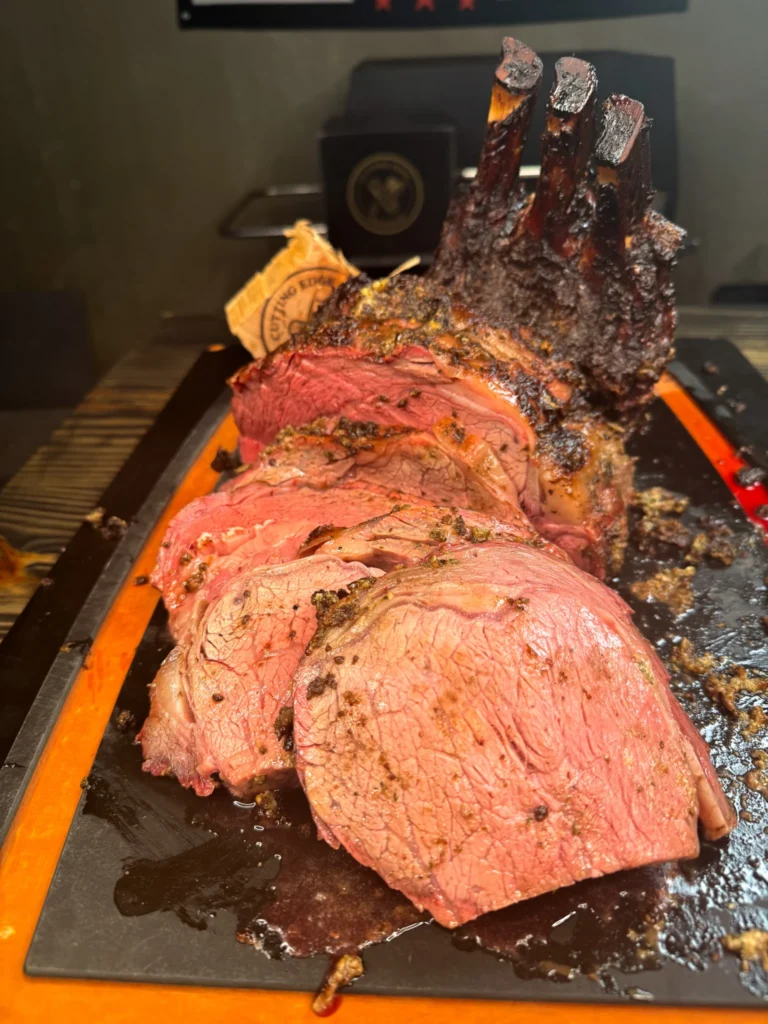
The beauty of having six recipes in your collection is that you can explore different techniques and flavor combinations over time. Maybe you start with the straightforward pellet grill method, try the hickory smoked version for Christmas, experiment with bone marrow butter for a special anniversary dinner, and keep the classic horseradish version in rotation for traditional holiday meals.
Prime rib is more than just dinner—it’s a centerpiece that brings people together, creates memories, and establishes traditions. When you serve a perfectly smoked prime rib at your table, you’re creating an experience that your family and friends will remember and request year after year.
So fire up your smoker, choose your recipe, select your wood, and prepare to create something extraordinary. These recipes have been tested and proven to deliver outstanding results. All you need to do is follow the instructions, trust the process, and enjoy the incredible praise you’re about to receive.
Ready to get started? Click through to the full recipe posts:
Happy smoking, and enjoy every delicious, juicy bite of your perfect prime rib!
COMMON ITEMS USED IN THESE RECIPES
Hasty Bake Charcoal Grill and Smoker
Knitted Gloves
Food Processor
Cast Iron Skillet
Meater +
Upgrade Your Meat Game with Grill Nation x Linz Heritage Angus
If you really want to take your grilling and cooking to the next level, you need to check out our collaboration with Linz Heritage Angus. We’ve partnered with them to bring you some of the best beef you can get your hands on.
Linz Heritage Angus isn’t your typical grocery store meat. These guys are the real deal – they raise their cattle the right way, and you can taste the difference in every bite. We’re talking about beef that’s been dry-aged to perfection, with marbling that makes your mouth water just looking at it.
Check out these premium cuts that’ll change how you think about beef:
Premium Ribeye Steaks – Perfect for special occasions
Dry-Aged Beef Selection – Take your grilling to the next level
Ground Beef & Burger Blends – The foundation of great BBQ


















































































